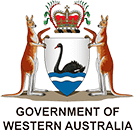Osteoporosis
Key facts
- Osteoporosis is a chronic (long-term) condition that makes your bones more likely to break.
- Many people don't know that they have osteoporosis until they fracture (break) a bone.
- Osteoporosis can be treated with lifestyle changes and medicines that strengthen your bones.
- There are also steps you can take to reduce your risk of falls and fractures.
What is osteoporosis?
Osteoporosis is a common, chronic condition (long-term disease). It's when your bones:
- become less dense
- lose minerals like calcium
- become more fragile
If you have osteoporosis, you are more likely to fracture a bone if you fall over.
Osteopenia is when your bone density is lower than normal, but you don't yet have osteoporosis.
What are the symptoms of osteoporosis?
Osteoporosis is a silent disease — this means it has no symptoms until you break a bone.
Osteoporosis increases your risk of bone fractures. Bone fractures are usually painful. Common fractures seen in people with osteoporosis are:
- fractures of the vertebrae — bones that make up your spine
- arm bone fractures
- hip fractures
Fractured vertebrae can also cause a loss of height and a curved spine.
What causes osteoporosis?
People with osteoporosis have decreased bone density and fragile bones. This means your bones can break more easily.
Getting older is associated with bone density getting lower. Females often lose bone mass more quickly after menopause.
Risk factors for osteoporosis
You're more likely to develop osteoporosis if you have risk factors for the disease.
Some of these risk factors are:
- older age
- being female
- having an early menopause (before 45 years)
- having a family history of osteoporosis
- some conditions — such as hyperthyroidism (overactive thyroid) and diabetes
- some medicines — such as some cancer treatments and corticosteroids
Some lifestyle factors that increase your chance of getting osteoporosis are:
- smoking
- drinking an excessive amount of alcohol
- not moving around and exercising enough
- not getting enough calcium and protein in your diet
- not having enough vitamin D
You can find out more about your chance of developing osteoporosis by using the 'Know your Bones' self-assessment tool.
When should I see my doctor?
If you are worried about osteoporosis, see your doctor.
Osteoporosis can run in families. Tell your doctor if you have a close family member with the disease. You should also tell them if you have ever had a bone fracture or break due to a minor injury.
Even if you don't have any other risk factors, see your doctor if you are aged 70 years or older. They may recommend you have a test to check your bone density.
ASK YOUR DOCTOR — Preparing for an appointment? Use the Question Builder for general tips on what to ask your GP or specialist.
FIND A HEALTH SERVICE — The Service Finder can help you find doctors, pharmacies, hospitals and other health services.
How is osteoporosis diagnosed?
Your doctor will ask about any symptoms and your medical history. They will also examine you.
Your doctor may recommend you have a bone density scan.
You may need blood or urine (wee) tests if your doctor thinks there could be another condition affecting your bone density. They may refer you to a specialist.
How is osteoporosis treated?
Osteoporosis can be managed with lifestyle changes and medicines. These treatments aim to:
- strengthen your bones so that they are less likely to break
- prevent falls that could damage your bones
Your doctor will recommend treatments based on your:
- age
- sex
- medical history
- bone mineral density results
- ongoing risk of fractures
Lifestyle measures for treating osteoporosis
Lifestyle measures that can help treat osteoporosis include:
- exercises that strengthen your bones and muscles
- stopping smoking
- eating a healthy diet with plenty of calcium-containing foods, such as dairy products
- having some exposure to sunlight so you get enough vitamin D
Your doctor or physiotherapist can help you build a safe exercise plan which:
- suits your needs
- reduces your risk of fracturing your bones
Medicines for osteoporosis
Your doctor may recommend osteoporosis medicines to strengthen your bones. There are different medicines for osteoporosis.
- Bisphosphonates — slow down the natural bone density loss process. These are either taken as pills or injected once a year.
- Denosumab — is an injection given twice a year. This can also slow down the development of osteoporosis.
- Romosozumab — can be used if you have a very high risk of fractures.
- Raloxifene — reduces post-menopausal bone loss.
- Menopausal hormonal treatment (MHT) — can be given to females with osteoporosis.
- Teriparatide — can be helpful if you've had bones break when taking other osteoporosis medicines.
Living with osteoporosis
It's important to follow your doctor's advice and make any recommended lifestyle changes. This can help improve your bone health and reduce your risk of falls.
Regular follow-up with your medical team is needed to check your ongoing risk of fractures. Your doctor can review your treatment and make changes as needed.
What are the complications of osteoporosis?
Bone fractures from osteoporosis can cause pain and disability.
Fractures can take a long time to heal. They can affect your quality of life and may stop you living independently at home.
Osteoporosis with fractures can lead to chronic (ongoing) pain in some older people.
Like any medicines, there are side effects with osteoporosis medicines. Your doctor will discuss the side effects of any osteoporosis medicines with you before you take them.
Can osteoporosis be prevented?
There are some things you can do to reduce your risk of osteoporosis and fractures. To help maintain healthy bones:
- eat foods containing calcium and protein
- get enough vitamin D
- stop smoking
- maintain a healthy weight
- limit alcohol — drink no more than 2 standard drinks a day
- exercise — exercises such as walking and strength training can improve your bone density
Preventing falls
Things you can do to lower your risk of falling are:
- asking for a review of your medicines
- having your eyesight checked
- wearing sensible shoes with non-slip soles
- exercising to improve your fitness, balance and strength
- using aids such as rails and walking aids, if needed
Your doctor, physiotherapist or occupational therapist can give you tips on preventing falls. An occupational therapist can also check your home for falls risks.
Assessing fracture risk
As you get older, your doctor should check your risk of fractures and your bone density. Even if you have not had any broken bones.
It's recommended that all people aged 70 years and older have a bone density test.
Resources and support
Healthy Bones Australia has information on osteoporosis, including:
- information in languages other than English
- information for Aboriginal and/or Torres Strait Islander people
- latest news
You can also call their helpline on 1800 242 141.
Musculoskeletal Health Australia also has information on osteoporosis, and you can call their helpline on 1800 263 265.
You can also call the healthdirect helpline on 1800 022 222 (known as NURSE-ON-CALL in Victoria). A registered nurse is available to speak with 24 hours a day, 7 days a week.
Learn more here about the development and quality assurance of healthdirect content.
Last reviewed: March 2025






-c25236.png)













